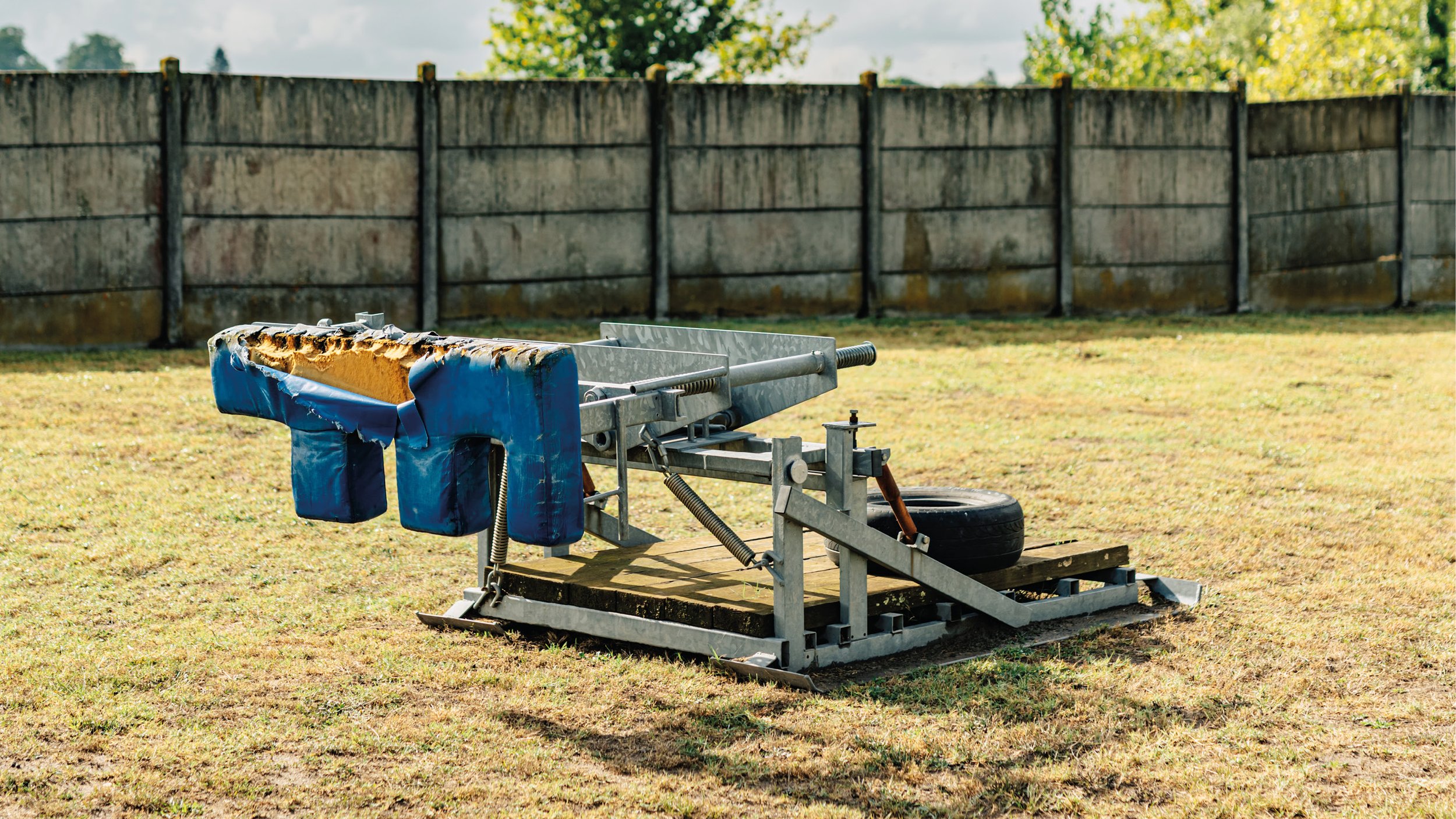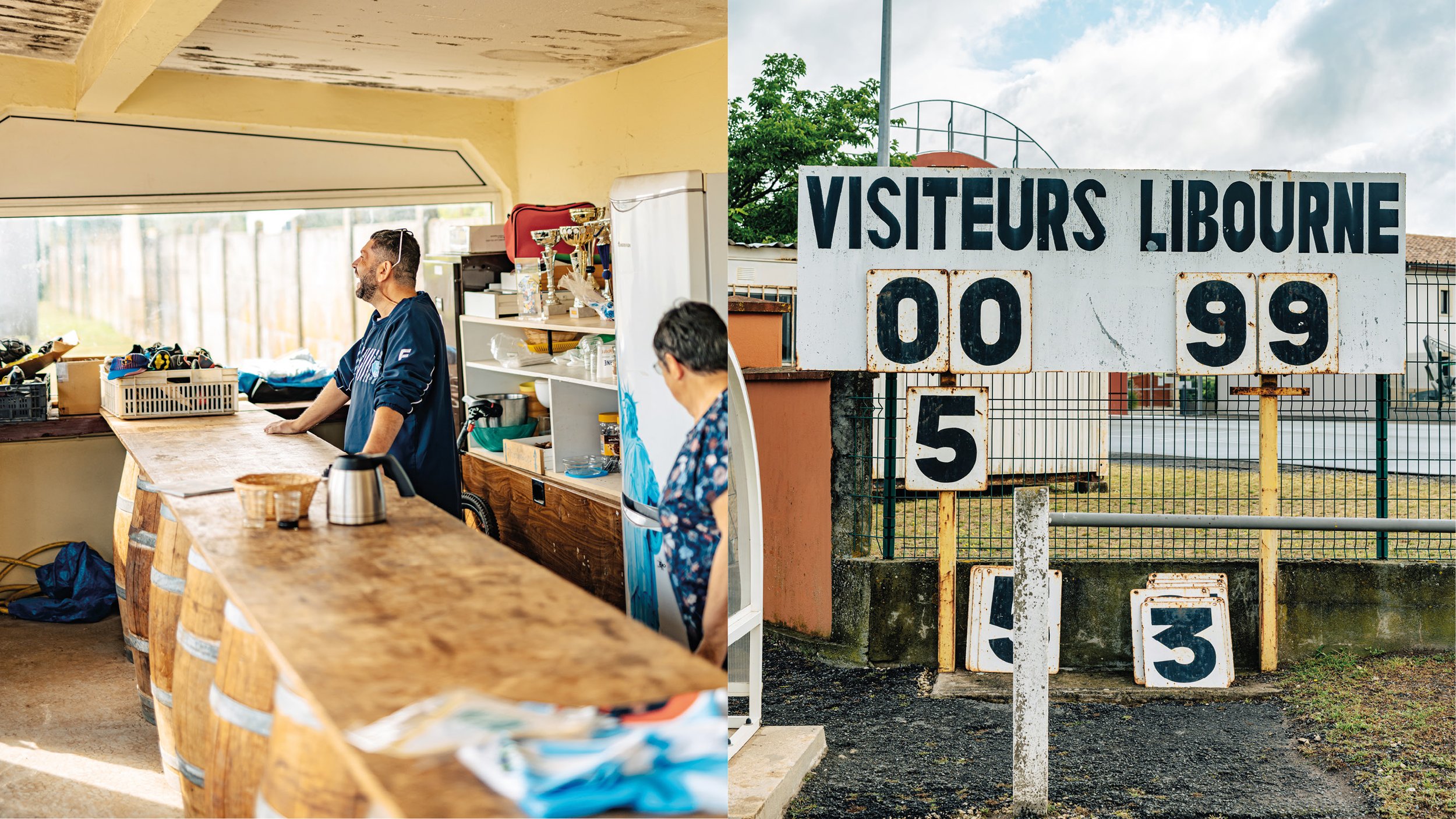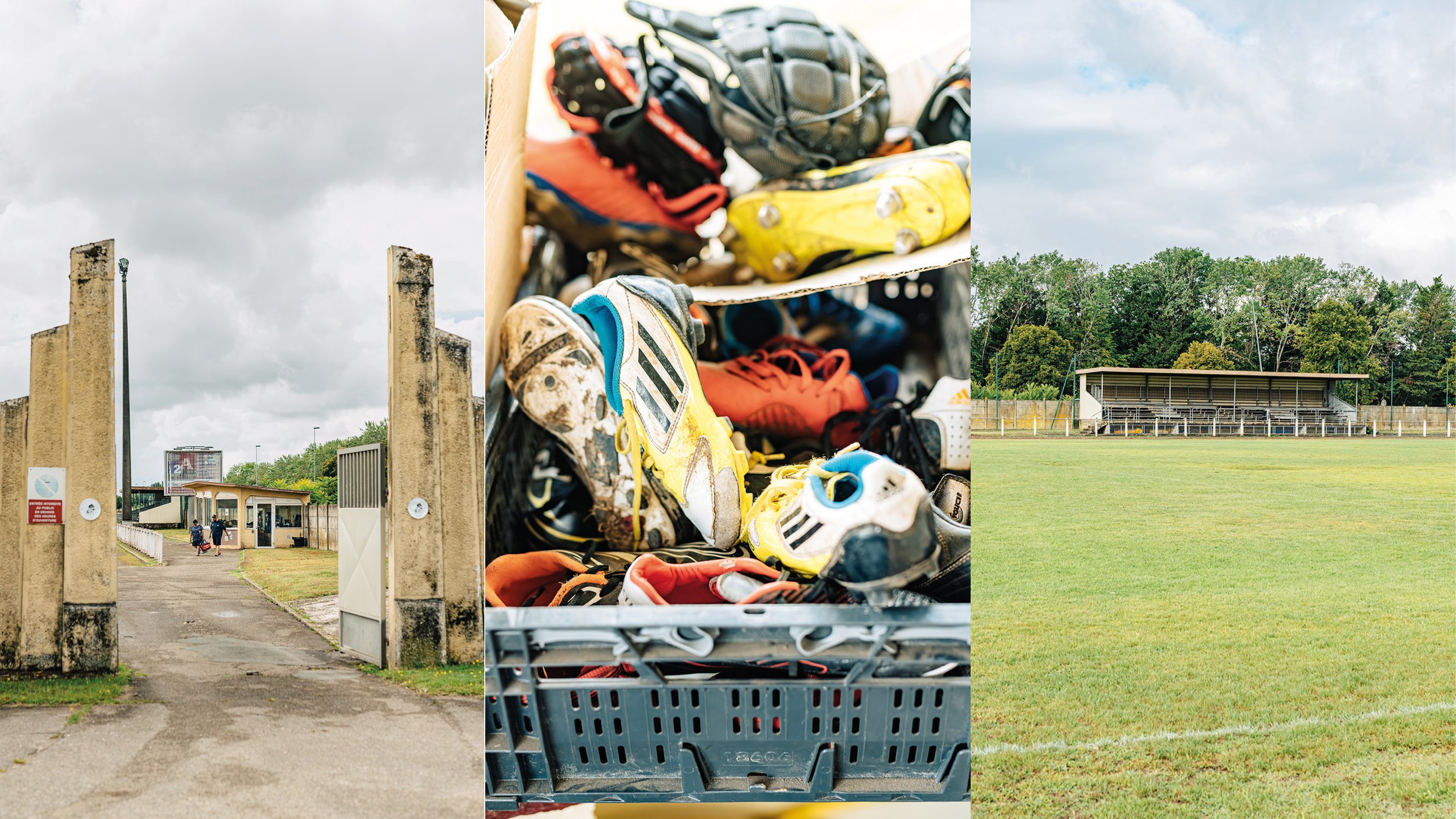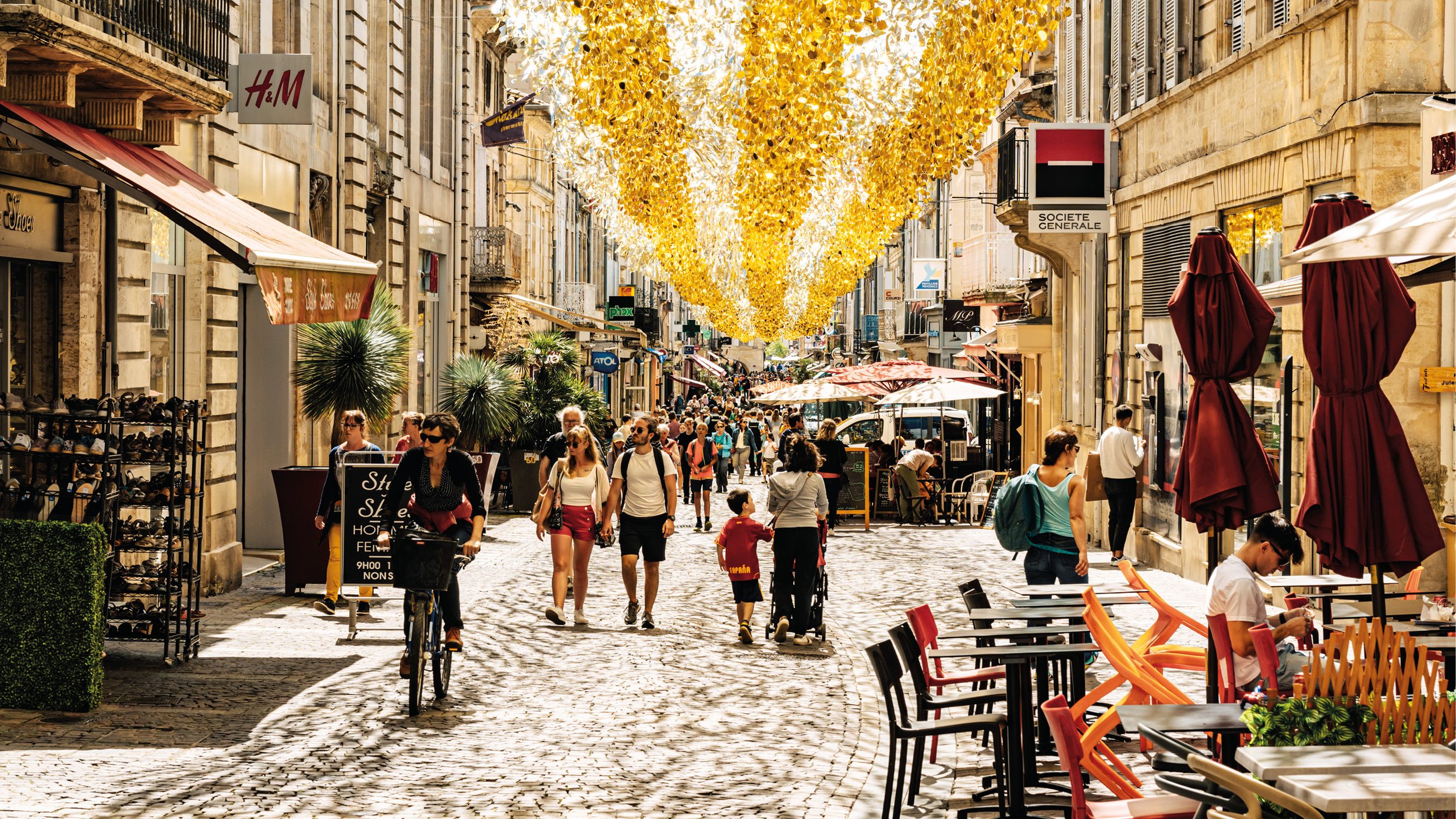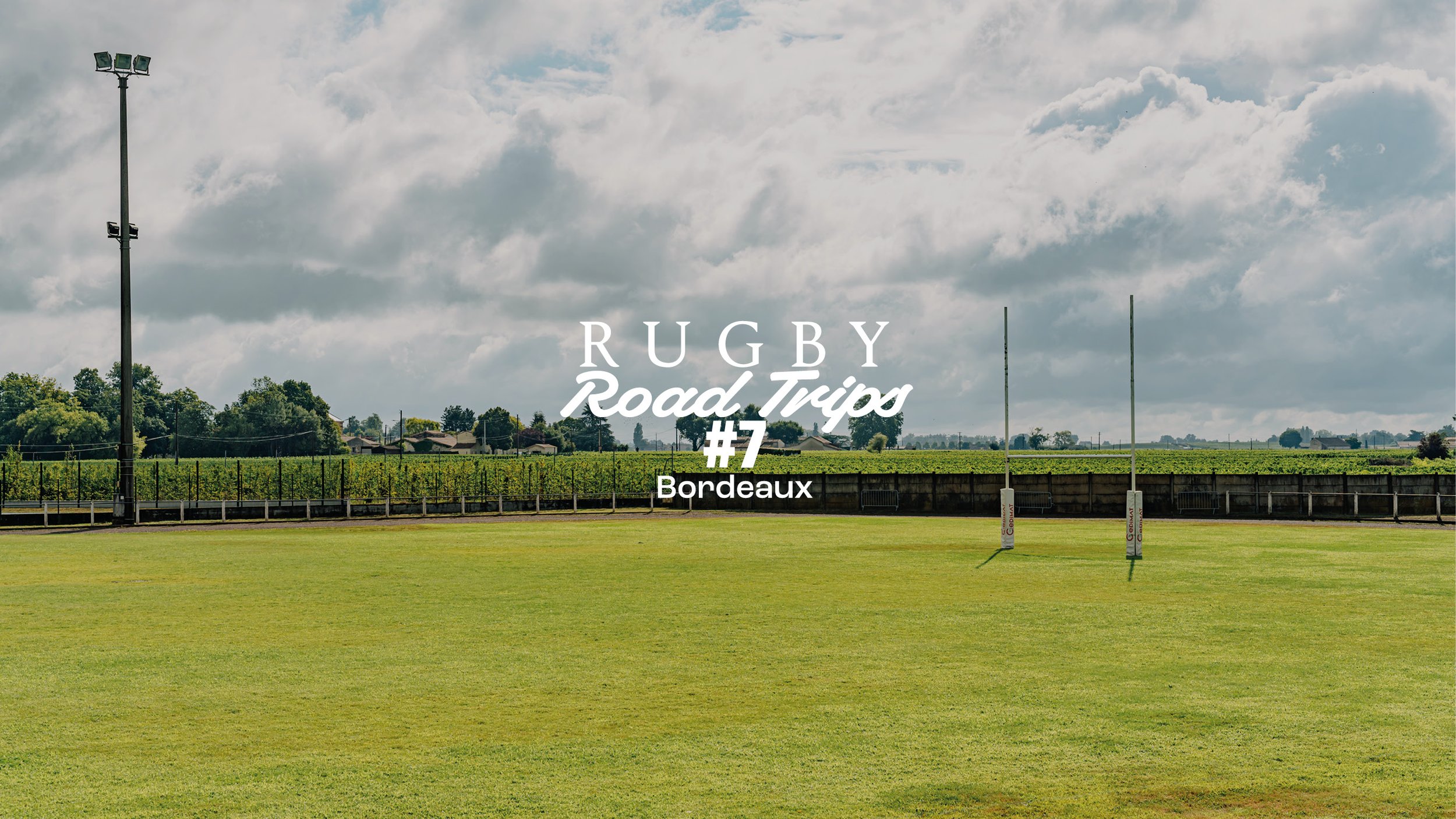
The English have spent time in Bordeaux under many guises: as invaders, as defenders, as rulers, as wine traders, as sailors, as tourists. And, fortunately for us and them, as rugby players too.
The vines of Pétrus are the stuff of viticulture legend. A comparatively small estate of little more than eleven hectares – most in this part of the world are double that, at least – its wines, made up entirely of Bordeaux’s famed merlot, can set you back anything from £400 to an eye-watering £720,000 for a space-aged 2000. Not to worry though, a quick scroll through Berry Bros and you get a bottle for just under three grand. Bargain.
The land on which it is grown, its terroir, is much coveted, even in the world’s most iconic winelands, where 410 million litres of wine were made last year – about 550 million bottles – from 120,000 hectares.
Pétrus resides within Bordeaux’s Pomerol appellation – one of 65 protected areas where Bordeaux wine can be grown – near the border with Saint-Émilion, and it says a lot about this corner of France that, sharing root space, soil and sunny climate, you’d also find a rugby pitch, less than a couple of miles up the road.
Although bordered by precious vines, Rugby Club Libournais is far from salubrious. You enter via a curiously austere, stone column entrance, to find a modest stand capable of holding perhaps a couple of hundred hardy fans, a standard ‘public-park’ changing room block, with an old handball court sitting alongside. The scrum machine was a project delivered by students from a local college and sits in disrepair and, while the pitch is in good nick, the clubhouse seems to be a single hut with a makeshift bar made by placing a plank of wood across a row of wine barrels.
Behind it are assorted trophies from age-grade triumphs and, at one end, all the second-hand rugby kit for parents to rifle through. What you see though, is only half the story. “That pitch is the most expensive in the world, it’s within the appellation of Pomerol, so it’s probably worth around £1.5m. We’re rolling around in luxury mud here,” explains Earl Moritz, an Englishman and former backrower, who also has his own small plot, Château Guillotin, some five hectares in Saint-Émilion.
Now in his forties, he moved here when he was a teenager, following his nan who’d moved years before. “I was sixteen and needed to make friends, so I joined rugby,” he explains. “My friends in England call me a Frog, and here they call me Rosbif, so both of them can do one!” he laughs. “The World Cup buzz is building, we had Fiji train here [in Libourne] last year as they were going to use it as a base, but then that didn’t happen, and we actually helped get Romania here instead.
“Some of the Romanians who played for us in the old days had stayed and we asked who they knew, and one of them had a contact with the president and so now we’re going to be their base.”
One of Earl’s former team-mates, David Privat, picks up the club’s backstory, which isn’t quite as humble as their ground appears. Although, in truth, perhaps it’s exactly like the ground: seemingly humble, yet with roots worth their weight in gold.
Originally known as Union Athletique Libournaise Rugby [UAL], they were France’s third oldest club, officially founded in 1898. “But started in 1893,” says David, of when the club’s first intake of players began gathering. “This is my family, it means so much, so it’s hard to talk about this, but in 2016, the club folded due to financial troubles. It was a very hard time, and this is the phoenix club. Luckily, the ground is municipally owned, so we still have this. We’re in the seventh level of French rugby now, but we’ve got two senior teams, women, minis – maybe 500 players in total.”
There’s more to the story though, especially when he talks of the good times at the club, and more specifically the players who took to the field. “William Ryder,” says David, “now he was really, really good.”
The town of Libourne was founded by an Englishman, specifically Sir Roger Leybourne in 1270 – the name is based on the eponymous Kentish village – with its fortifications built due to its unique position not only on the doorstep of both Pomeroy and Saint-Émilion, but also on the confluence of two rivers, from which wine (and salt, wool and wood) could be shipped.
Today, one of the original towers dominates a corner of the town, and it retains much of the sandy-stoned charm you see in this part of France, although when we visit, a street arts festival has taken over – which means anything from mime artists ‘considering’ mounting push bikes suspended in mid-air for about fifteen minutes, to theatre groups stomping in rhythmic patterns around the Place Abel Surchamp town square. That they do it wearing berets – which originated down here – makes it all so wonderfully French.
Amid all this, in the former stables of a military barracks which has been the actual, official, clubhouse of the rugby club in all its guises, we pick up the William Ryder story from Benoit Vironneah. After first meeting Benoit at his place of work, the impressive Château Beauregard, and hearing tales of age-old winemaking, the Knights Templar and then witnessing giant robots tending to the vines, his rugby stories are even better.
Benoit, or Babou, as everyone calls him, knows how to provide the right setting. At one end of the building lies the bar, there’s a long table through the middle, with a giant timber-framed fireplace at the end. “We always used to drink here every Friday night,” he says, standing next to the fireplace, “and tell the stories of this player, that player, remember all the games, the moments ... this place is the spirit of the club, where all the stories were told.”
William Ryder is often mentioned. “He was very special, a big friend on the field and after too,” says Babou. “I know he had some troubles, as everybody has, with drink. We had to take him out of the hotel as he was costing us too much in the minibar, and he moved in with one of the club members.
“But he was an incredible, amazing, player,” continues Babou. “I’d never seen a player like him, fast and strong, while the same height me, but not same weight or speed! I was so happy to share moments with him, on and off the pitch.”
Ryder was one of many international players who’d spent time at the club: English, Romanian, New Zealand, South African, Scottish, Georgian and Czech, including Babou’s close friend Jan Kurka. Still looking every inch the Czech second row, with 27 caps to his name, he played in the days when the Czech Republic, as it was, would go toe-to-toe with Georgia in front of thirty thousand. “I arrived 23 years ago, planning to stay for a year, and here I am,” he says, “I played for Bègles for two years and then joined Libourne. The start to life here was difficult. But, I was in France, they like wine, they like rugby, what’s not to like?”
Ironically, while wine did fuel the club indirectly through employment, the restrictions on alcohol sponsorship made it impossible to truly utilise the impressive wealth borne of its land.
Not that it stopped their ambition. In the early 2010s, under president Alain Donné and Libourne-born coach David Banquet, who’d made his name with Toulon and would later coach Auckland Blues, the club embarked on an ambitious drive up the rugby pyramid.
UAL had largely spent their rugby life Fédérale 3, the fifth tier of French rugby, but pushed on to Fédérale 2, where they competed for honours. “When we got there the troubles had just begun, but it was still good, we were doing well,” says Babou, “and we actually ended up getting promoted to Fédérale 1.”
Although the club had lost out narrowly on the pitch for promotion, the expulsion of a side from the division above, meant there was an extra place available. “The question of budget arose,” says Babou. “We had just €750,000 and we’d be fighting against clubs with €3-4m, and you have to accept the fact money brings players...”
Such was the magnitude of the call, the club even liaised with the local mayor – unlike other clubs with a single major benefactor, UAL relied on 64 different private sector backers at the time, albeit a list that includes Ceva, who also back Top 14 side Union Bordeaux Bègles (UBB). Donné said at the time: “I had fifteen minutes to give a decision... I informed the mayor of the constraints linked to a rise in Fédérale 1. He said to me ‘we will manage’.”
Only they didn’t, folding in the summer of 2016, despite finishing sixth from eleven in the table. “It’s a business, I don’t like to say that,” says Babou, “but before this happened, a lot of rugby players came from everywhere even though we didn’t have money, so something happened. I don’t know when, but money took over.”
The club were soon reborn to begin again the next season, led by their strong mini and youth section. They’ve since earned three promotions in five seasons, with Covid in the middle. “The symbol of the club – first UAL and now RCL – is the phoenix, and we’ve always said that the phoenix will always rise,” says Babou. “But it was very sad for my generation: we’d played here since we were children, and our club was gone. We’d given so much for this club, and we had to start under another name, at the bottom of the barrel.”
Babou, along with a handful of others, remain from the senior squad almost a decade ago, and he knows his experience can come in handy. “The younger ones are faster, but the old ones know the way,” he says. “We continue to fight for our club, to give something for the young players to come to, and understand what you have to do, this is our mission now.”
Little more than an hour west, another rugby ‘phoenix’ is continuing its burn brightly, in the city of Bordeaux. It wasn’t even twenty years ago – 2006, to be precise – that the two Bordeaux clubs, Stade Bordelais and CA Bordeaux-Bègles-Gironde, merged, creating UBB, a super club that is now the best-supported in the world. Perhaps it should be no surprise, this one is still rising, given where it resides.
France has developed something of a habit of creating gargantuan regions, ironically to try and simplify things for us foreigners, and in Nouvelle-Aquitaine it has moulded a rugby-playing monster. A huge chunk of south-western France, it’s the biggest size-wise of the regions, two-thirds the size of England. A slice of Atlantic coast borders one side, starting more or less at La Rochelle in the north. The inland border heads across to the east, north of Poitiers – site of the famous English victory (where 6,000 beat 16,000) in the Hundred Years War – then to Limoges and Aubusson, before curving south, scooping up the likes of Brive and the Dordogne Valley, Agen, Pau and Bayonne en route back to Biarritz and the French Basque country to the south.
Rugby arrived here in the 1800s with the merchants and sailors via the ports of Bordeaux and Bayonne, and it remains – together with its Gascon neighbour Occitanie – the sport’s heartland. As many as four hundred clubs share this fine terroir, including five in the Top 14 – La Rochelle, UBB, Pau, Biarritz and Brive – and three in Pro D2 – Stade Montois, Agen and Bayonne.
And at the heart of this, is Bordeaux, almost exactly halfway between Biarritz and La Rochelle.
The Gironne river starts in the Spanish Pyrennes, flowing through south-western France, including Toulouse, before arriving in Bordeaux, en route to the Atlantic. It’s been the lifeblood of the city for centuries, allowing its wine to head for foreign – often English – shores and today it still dominates. Alongside it, hugging its curves, are museums, mansions, galleries, gardens – the city’s history in bricks, mortar and monuments.
Past, present and future are muddled, not least in Cité du Vin, sitting on one river bend, just north of the centre. A €63m architectural, research, educational tribute to wine, it reflects the renaissance of a city that is among the most visited in France, but was once overlooked. The riverside and docks, where people would sometimes shy from the characters that resided there, are now refreshed, rejuvenated, but in-keeping with the history that lines the streets.
In a plum spot to watch the water and the boats drift past, UBB have opened the UBB Clubhouse, decorated from top-to-toe in the club’s famed claret regalia, with history filling every space. It’s where to go for a slice of rugby, with games always on the multiple screens, to be taken with pints of local beer, bottles of Bordeaux, and charcuterie and cheese boards to fuel any session. “I think for everybody in Bordeaux, you’re either rugby or football, it’s really rare to be both,” explains Alizée Cauwel, who works in communications for the club. “Before, when football was in the top league, it was a bit balanced, but now they’re down, it’s not the same, more people are interested in rugby. Three Top 14 semi-finals, the club is evolving in a way that’s bringing in more people. Although, there has always been rugby here, the first thing my mother and father wanted to show me as soon as I was old enough, was rugby. UBB is a family, you feel it as a supporter, you’re part of it. But that’s what Bordeaux is like, we’re all close, everyone knows everyone, it’s a city, but it’s also a village.”
UBB’s regular home ground, the 34,462-capacity Stade Chaban Delmas, is also close to the city centre, meaning the average crowds of 28,000 that the club attracts, spread through Bordeaux before and after match days.
For the Rugby World Cup, UBB’s second home, Stade de Bordeaux or Matmut Atlantique, is being put into action with its bigger capacity of 42,115. Filling it was never going to be a problem, whoever played, as UBB have managed it several times in the past, while the football side have got by on average gates around the 20k mark. “It’s the best average [rugby crowd] in Europe,” explains Kane Douglas, UBB’s 34-year-old former Wallaby lock. “When other teams come out of that big tunnel, and the way it sort of goes underground and then back up again onto the pitch ... you have the noise, the flares, it’s mental, especially when you compare it to Australia where it’s almost embarrassing in sport to be too fanatical. It’s looked down upon. But here there’s just so much passion in supporting your team, it’s an eye-opener when people come here.”
This is Kane’s sixth season at Bordeaux, arriving from the Reds. “There’s a lot of rugby here,” he continues. “I’ve played maybe 120 matches in five years, and that’s about the same as I did in Super Rugby, in eight seasons, so it’s a lot of footie.”
He arrived during the Rory Teague coaching era, who was followed by Joe Worsley, Christophe Urios and now Yannick Bru. Urios was sacked in November last year after a poor start to the season, despite the fact the club had made their first three Top 14 semi-final appearances under him and also reached the last four in both the Champions Cup and Challenge Cup. Had Covid not happened, they could have even been champions. “We were comfortably sitting in first place by a fair bit with just a few months to go,” says Kane. “But then Covid happened, and the season was cancelled.”
This year a change of mindset is needed. “I think because we’ve stayed at the same level for the last few years – and before that first one in 2021, we’d never been top six before – we need to make sure we’re not happy with just making the play-offs,” reckons Kane. “We have to change that mentality, now we need to win something.
“We also need to get out of the barrage [the play-off matches between the sides finishing third to sixth to decide who faces the top two in the semi-finals], because it’s such a huge benefit if you miss it and go straight into a semi-final. Those sides are always better off, because in the barrage, you always injure one or two, and then you’re rolling into a semi into a fresh team. We’ve done that three years in a row, so we need top two now.”
Kane had a stint with Leinster, but says the says the support at UBB is at another level. Given he recently received a medal from the mayor of his town for coaching kids after school, who knows what honours await if he helps UBB to their first-ever title. “It’s cool that they’re just happy to show how much they love their rugby, it’s a great thing.”
This extract was taken from issue 23 of Rugby.
To order the print journal, click here.


